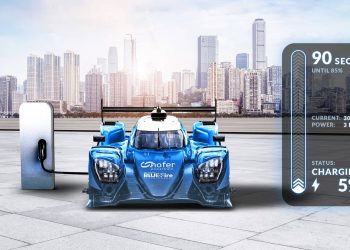One of the fundamental values of sustainable mobility is its high interest in improving society’s living conditions as citizens move around major cities.
The percentage of the world’s population with a disability can also count on technological tools, in the field of electromobility, that will help make their day-to-day lives easier.
In this sense, the giant of the automotive industry, Ford, developed a charging station for electrified cars that, through a robotic innovation, allows people with special conditions to connect their car.
How does it Work?
While it is true that complex technological mechanisms have been applied for this product, the way it is used, as explained by Ford, is quite simple. The first step is to activate the FordPass application on a mobile device or in the car, which opens a cover on the charging station; subsequently, a robotic arm extends towards the car’s charging port, guided by a small camera.
Thus, drivers, without getting out of their car, can monitor the progress through the app. When charging is complete, the arm automatically returns to the charging station.
Read also: Technological Breakthrough: Electric Vehicle Capable of Capturing CO2 While Driving
According to Ford of Europe Research Engineer Birger Fricke, the company is committed to ensuring freedom of movement and, at the moment, refueling or charging a vehicle can be a big problem for some drivers.
“The robotic charging station could be an additional convenience for some people, but absolutely essential for others. In the future, refueling technology could be a fully automated process, with drivers sending autonomous vehicles to refuel without the need for a human operator,” he argued.
Ford clarified that after undergoing laboratory tests, it began real-world testing of the new robotic charging system created by the University of Dortmund, Germany, which could be installed in accessible parking spaces, parking lots or private homes.












